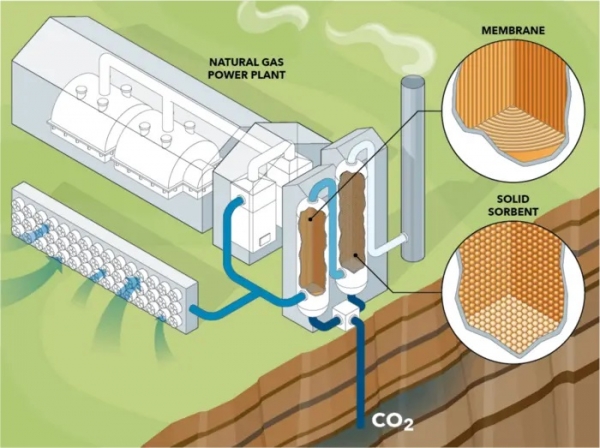Natural gas is one of the largest contributors to the world’s energy and a viable fuel for many different uses.
Natural gas is one of the largest contributors to the world’s energy and a viable fuel for many different uses. Natural gas combined cycle (NGCC) plants in particular are a highly efficient system design that will likely continue providing long-term baseload electricity.
However, there’s a problem. Natural gas is a fossil fuel, and the increased use of fossil fuels releases more carbon dioxide (CO2) in the atmosphere – a primary concern for climate change.
“As more industries move toward net zero emissions, carbon capture and storage with high capture rates will be necessary to keep natural gas around in a low-carbon future,” said Katherine Hornbostel, assistant professor of mechanical engineering and materials science at the University of Pittsburgh Swanson School of Engineering. “And as intermittent renewable energy expands, natural gas power plants will have to operate at low-load conditions more frequently.”
Hornbostel, who is well-versed in carbon capture technology, led a team of researchers from West Virginia University, University of Toledo, and AristoSys LLC on an ARPA-E project to model a novel hybrid carbon capture design at NCGG plants that nearly reached net-zero emissions.
Read more at: University of Pittsburgh
Hornbostel’s research group focused on optimizing the design of this solid sorbent system and found that the optimal conditions were reasonable and compatible with integration into an NGCC plant. They believe that future work with a solid sorbent that’s more suited for direct air capture could enable net-zero or net-negative CO2 emissions. (Photo Credit: University of Pittsburgh)




